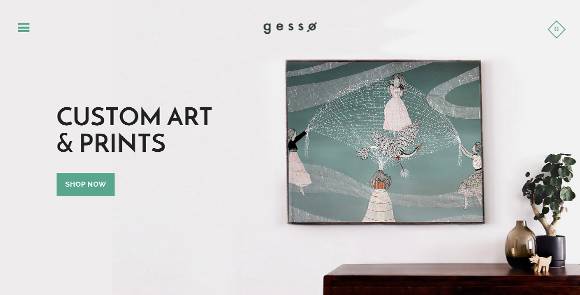
I recently read this article by Mark Schaefer on “Content Shock”, which quite accurately pinpoints a fear that I suspect all content marketers have in the back of their minds. How effective is content marketing and content creation in converting sales, as the amount of content increases and our ability to digest content remains finite?
When I talk about content here, I’m talking about brand blogs, websites, and social media. As Mark Schaefer points out, the content landscape has changed dramatically in the last ten years. In 2009, with less content players, it was much easier to create a brand blog and gain traction. Now, with the saturation of brand blogs, social media content and online publications, it can be a much larger and costly endeavor. Which means you want to be able to create cost-effective and meaningful content.

Nobody truly knows what the threshold of content shock is. As brands and companies all work towards creating content, naturally the accumulated volume of free content exponentially increases. But what are you using the content for? If you’re using the content to convert new and previously unknown customers then content shock is applicable to your situation. The amount of free content available means that the likelihood of a new, potential customer clicking on your particular blogpost or article amidst many others is slight, unless with amazing SEO, you are one of the first few articles displayed in search.
But what if we stopped thinking about content as a search and SEO lead generation tool, and started thinking about how content benefits the existing consumer base? If we create tailored content for our existing consumer base, we fall into creating content for a niche market – which makes content shock a moot point. Although these consumers may have other brands also vying for their attention, if they’re loyal consumers, your brand is likely the only one they’re looking towards for information surrounding your product and industry.
Leverage this status quo and continue to grow it. In fact, because you already are in contact with these consumers, you have an advantage which you may be squandering if you do not create content. Below we’ve focused on three reasons why growing content for consumers still matters, whether that’s on a blog, on a website or on social media.
Growing brand loyalty and trust
WP Engine and TNS (Taylor Nelson Sofres) conducted a study that showed 62% of Americans want to read original content from brands. To be specific, brands that they currently are engaged with and purchase from. Millennials, in particular, have embraced brands in their lives, and a direct communication line with brands creates trust and opportunities for involvement. 60% of millennials call themselves brand loyal, so the sooner you can build a relationship, the more stable that brand-customer relationship might be. As Forbes points out, millennials want to be on the front-line receiving communications, and if it’s good they will also be sharing such information.
62% of Americans want to read original content from brands.
What kind of content should be created then? When you create content, you’re competing for attention, not against your competitor’s products. Content shock gives us a further push towards quality content, as we’re competing against other content creators. Good content from a brand is specific because who knows your consumers and your products better than you? Content creation allows you to show your expertise, and help reassure a consumer that they picked you for a reason. Chobani doesn’t just share the nutrient information about their yogurt, they also show consumers how they can creatively use yogurt in your kitchen to make Turkey Pot Pie, for example. FitBit’s blog shows users how they can gain the most from using their FitBit and following nutrition tips or exercises from experts. This content supplements what a consumer already knows about a product and deepens their knowledge on how to make it more useful.

Inevitably, this also generates a feeling of trust between the brand and the consumer. Apple is famous for their Genius bar service because users feel that their expensive purchase is recognized in return with high customer service. Knowing that a brand is invested in how you use their product and your lifestyle feels good, and probably will keep you loyal to the brand. How can content achieve this? By rewarding consumers with information about how to sustain their lifestyles, and related issues that they should be aware about. If new studies show that blank chemical is toxic, wouldn’t you want to know that your brand is doing something immediate about it, or that it’s safe from it? Consumers do, too.
The power of sharing
During a consumer’s path to purchase, social networks and word-of-mouth referrals might actually outweigh organic search importance. Although research shows that up to 60% of consumers will research the brands and products they are about to purchase, 93% of millennials claim to have purchased a product after hearing about it from a family member or friend. This means retaining customers is increasingly important – they are your best brand ambassadors.
Our email inboxes are a prime example of content shock. The number of emails in my Promotions tab of Gmail is in the hundreds every single day. I don’t have the time or patience to open every single one, but I will skim the list and titles and click on those that interest me. It’s still important for those brands to send me emails. Based on my high or low open rate, brands can segment the information I get.
I enjoy tailored events and offline interactions, so my open rate for those emails is incredibly high. Brands shouldn’t shy away from sending me one or two emails about an event, because given my inbox, I simply might have missed the first email. (At the end of the day, sending more emails than less is okay). Once I open that email, my attention is fixed on that brand’s content, and I will be thinking about how it relates to me and whether I want to share it. For example, I recently shared Everlane’s pop-up shop and talk with Caroline Ventura with a friend because I thought she would enjoy going. In doing so, I shared the brand and my positive interactions, and also got my friend thinking about Everlane in relation to artists and entrepreneurs.

Curating and becoming a resource
A blog is not the only way to create content. Social media content is also increasingly valuable, and each platform has its own audience. Given how much content there is out there, sometimes as a reader, even I don’t know where to begin. There are a few places I start and many of them are curation sites. Take Twitter for example. Not everything a brand posts needs to be content that they created. If they’re sharing great content from different areas of the web, they’re also taking a stance on what they care about. Harmless Harvest makes it a point to be on top of sustainable farming, food safety and forest conservation. These concerns are built into their mission and when following them on Twitter, I am able to easily stay informed on these topics.

In fact, with the overwhelming amount of content out there, Generation Z is purposefully relying on curators for content. Curators help them consolidate and limit their potential content options to a manageable size that they can consume and digest. Generation Z includes youths up to age 18, and are the future audience that brands need to start thinking about now in addition to millennials.
In conclusion
“Content Shock” sounds quite scary, and the negative connotations to the term seem to strike fear into brands and companies hoping to leverage content as part of their marketing strategy. The competition to create quality content means that the cost of content is higher, yes, but doesn’t mean that we should cease creating it because there isn’t a return. Of course, every company needs to decide how much they are willing to invest into content and what the potential returns are but don’t shy away from content if your consumers could use the engagement.




